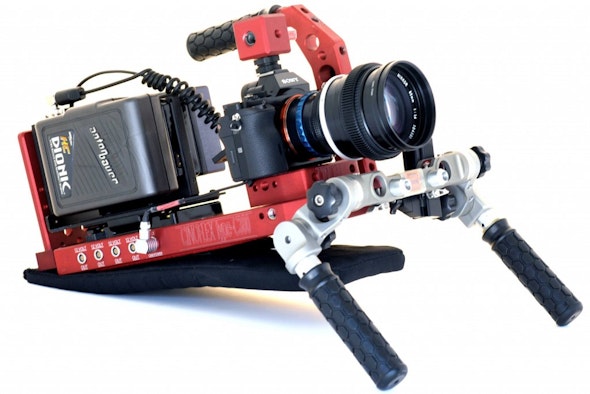How to use an External Battery with the Sony a7S II
There are a thousand reasons you would want more battery life from your Sony a7S II - maybe you shoot conferences or live events, and you need the low-light capabilities of the camera but can’t afford to have a minute of downtime. You can buy bigger and bigger SD cards, and you can run HDMI to an external recorder with more storage, but the capacity of your battery is pretty well capped. Or maybe you just hate having to stop your shoot every half hour to disassemble your rig and put in a new battery. Well good news - there is a whole market of products built to solve your problem and let you shoot indefinitely. Whether you need a quick-and-dirty fix or a pro-grade solution, this guide has you covered.
Option 1 - USB Power
There are two basic ways to go about powering this camera - you can go through the USB port on the left side of the body, or you can run a dummy battery to a real power supply. We’ll start with the USB port, which, to be clear, is the more questionable of the two approaches but also the more affordable. The cardinal rule is the same both ways: make sure your voltage doesn’t stray too far from the roughly 7.2 volts put out by the native batteries. You don’t want to melt any of the internal components.
The first step is to find a battery that can supply enough amps to keep the camera going. Keep in mind, this method is supplementing the internal battery, not replacing it. That means that even if your external battery isn’t powerful enough to run the camera on its own, it can certainly slow the decline of the internal. Luckily for us, the power demands of the a7S II are fairly low (below 1 amp) and the market for external batteries has shot up over the past year or two. Just about any decently reputable battery will do you just fine. A good entry point might be the Anker PowerCore series.
Another interesting alternative is the Atomos PowerStation Video. It accepts two of the large L-series batteries used for the Sony FS7, which are hot-swappable and last forever. It outputs power from 2 usb ports, and it has 1/4” threads on the top and bottom for easy mounting anywhere.

But no matter which battery or batteries you buy, there are a number of creative ways to mount or carry them. Some people just buy a long USB cable and keep the battery in a back pocket. That adds convenience and keeps camera weight down, but it also increases the risk of a horrible accident if you forget you are now cabled to your camera, or if the cable catches on a doorknob or piece of furniture. Mounting directly onto your camera or your tripod makes for a much cleaner cable job, but also restricts your ability to then re-mount the camera onto a glidecam or a shoulder rig. The specific mounting decision will come down to your specific shooting needs.
Option 2 - Dummy Batteries
Option two is probably most commonly represented by the good old battery grip - a large, heavy piece of hardware that bolts directly onto the bottom of the camera, holds two or three of the native batteries. And while battery grips are a fine solution when the camera is used on its own, they don’t tend to play nicely with cages or larger rigs. And so somebody looked at this problem and realized that they could plug a dummy battery into the camera and just run a wire from there to whatever giant power source they wanted to mount onto their setup.

We now live in a world with dozens of off-board power solutions. Generally speaking, these allow you to use groups of much larger, higher-capacity, and more common batteries to power your a7S II. An excellent example of this is the IniPRO Tools V-Mount Plate. This plate mounts onto a set of 15mm rods and lets you power your A7s II off of the giant cinema-camera batteries you would usually see on the back of an Alexa or a Red. The Varvon A7s Battery Package looks and functions similarly to one of the USB power banks, but with a dummy battery that lets it plug right into the bottom of the camera.

These battery accessories, almost by definition, are designed by reputable manufacturers with the a7S II in mind, and as such are more plug-and-play. You don’t need to worry about volts or amps or any of that mess with one of these solutions, just battery capacity. For the less technical among us, that may be worth the price of admission on its own.
In Conclusion
If you want to power your Sony a7S II through the USB port, you can find a plethora of improvised solutions that make use of commonly-available power banks in creative ways. But if you feel safer with a trusted filmmaker’s brand, you can buy dummy-battery solutions that play much nicer with the standard 15mm rods, 1/4” screws, and miscellaneous rigging equipment we use every day. Both solutions will keep your a7S II running for significantly longer than it would ever last on its own.



